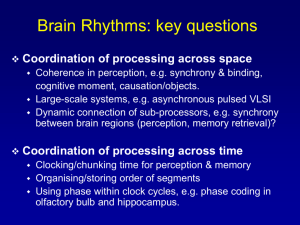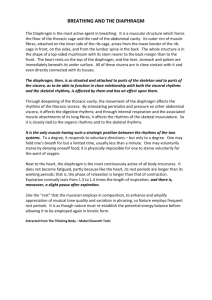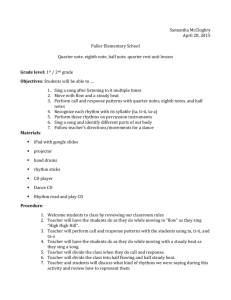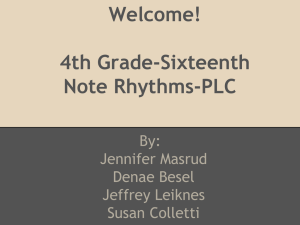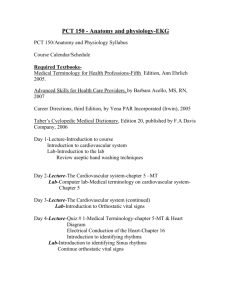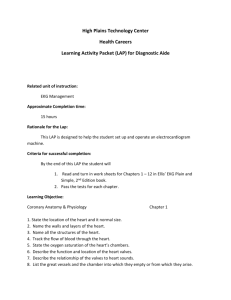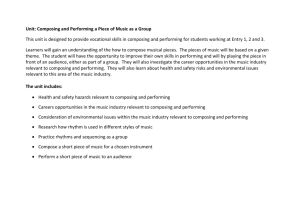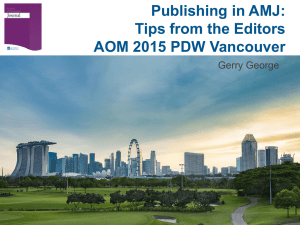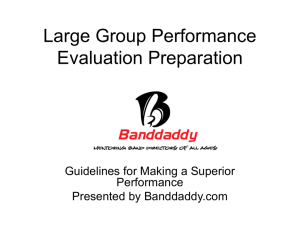Rhythms of Change - Process Research Methods
advertisement
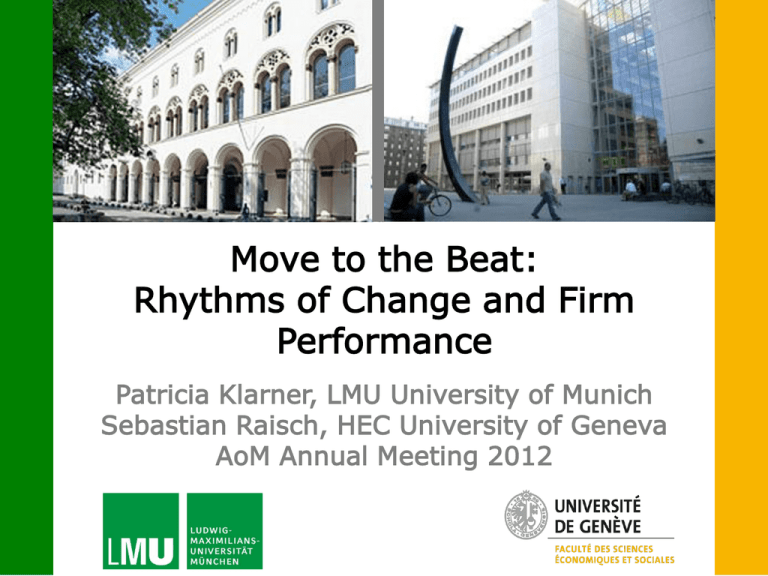
Move to the Beat: Rhythms of Change and Firm Performance Patricia Klarner, LMU University of Munich Sebastian Raisch, HEC University of Geneva AoM Annual Meeting 2012 The Elevator Pitch Move to the Beat: Rhythms of Change and Firm Performance Organizations face a paradox between change and stability that is difficult to reconcile. We argue that the rhythm of change is a means to manage the change-stability paradox. We conducted an exploratory analysis of different change rhythms and then tested how they relate to firm performance (sample: 67 European insurance firms, 1995 - 2004). Our findings show that regularly changing companies can better cope with the change-stability paradox. Methods Summary of Data Analyses Qualitative analysis: (1) ClustalW multiple sequence alignment method to categorize (binary) change data into similar event sequences; (2) Phase analysis to classify change and stability sequences into consistent change rhythms Categories of firms with similar change rhythms Quantitative analysis: OLS regression analysis for hypotheses testing Process Method ClustalW Multiple Sequence Alignment (1/2) a) b) Process Method ClustalW Multiple Sequence Alignment (2/2) AMJ Review Process Some Issues in the Review Process (1/3) R: The detection of a particular pattern of rhythm seems to be sensitive to how many years of data you are using. A(1): Justification of period under investigation. A (2): Additional data collection for an extended period of 15 years. A (3): Discussion of potential censoring effects in limitations section. AMJ Review Process Some Issues in the Review Process (2/3) R: Clarify the key dimensions of change (frequency, rhythm, timing, stability, magnitude). I’m worried that you’ve created a false dichotomy between change and stability. A (1): Better clarification of the process of interest. A (2): Definition of specific events at the beginning of the paper. A (3): Controlling for other dimensions of change in quantitative analysis. A(4): Acknowledging in discussion section that findings relate to a specific type of change. AMJ Review Process Some Issues in the Review Process (3/3) R: I would suggest that you rewrite thoroughly the description of the new method (text, appendix, and figures), and present it to us in a way that is intuitively understandable. A (1): Shorter explanation of the ClustalW method in the paper and a more detailed description in the Appendix. A (2): Clarification of the underlying logic of each analysis step. A (3): Illustration of the method with the same firm examples and a data extract from the program for each step. AMJ Review Process Lessons Learned: Publishing Process Research Importance of defining very precisely which events are studied in process research. It is essential to provide a clear and intuitive explanation of a new process method. For hand-collected data, it is vital to anticipate the need to flexibly extend the data collection to longer periods and additional variables. Importance of submitting process studies to the right outlets. Thank you for your attention – and best of luck for your own process research!


